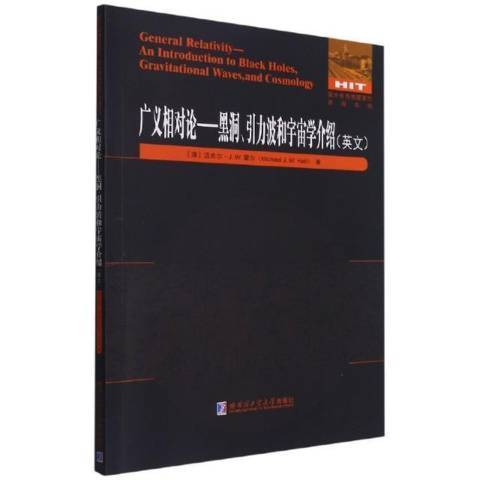《廣義相對論:黑洞、引力波和宇宙學介紹》是2021年哈爾濱工業大學出版社出版的圖書。
基本介紹
- 中文名:廣義相對論:黑洞、引力波和宇宙學介紹
- 作者:(澳)麥可·J.W.霍爾
- 出版社:哈爾濱工業大學出版社
- 出版時間:2021年
- 頁數:144 頁
- 開本:16 開
- 裝幀:平裝
- ISBN:9787560394381

《廣義相對論:黑洞、引力波和宇宙學介紹》是2021年哈爾濱工業大學出版社出版的圖書。
《廣義相對論:黑洞、引力波和宇宙學介紹》是2021年哈爾濱工業大學出版社出版的圖書。內容簡介廣義相對論是描述物質間引力相互作用的理論,其基礎由愛因斯坦於1915年完成,1916年正式發表,這一理論首次把引力場解釋成時空的...
廣義相對論(General Relativity) 是描述物質間引力相互作用的理論。其基礎由阿爾伯特·愛因斯坦於1915年完成,1916年正式發表。這一理論首次把引力場等效成時空的彎曲。2022年9月,廣義相對論核心原理獲最精確檢驗 。概念介紹 黑洞 廣義相對...
在2016年,LIGO科學合作組織和Virgo合作團隊利用先進LIGO探測器,首次探測到了來自於雙黑洞併合的引力波信號,驗證了廣義相對論最重要的推論。在μ子壽命的實驗中,在微觀領域證實了雙生子佯謬效應。相對論的套用 相對論主要在兩個方面有...
這是來自於遙遠宇宙中眾多星系中心的超大質量雙黑洞的低頻納赫茲引力波信號。在愛因斯坦的廣義相對論中,引力被認為是時空彎曲的一種效應,這種彎曲是因為質量的存在而導致。通常而言,在一個給定的體積內,包含的質量越大,那么在這個體積...
特別地,本書對於黑洞和引力波都以專門章節做了探討。在*後,本書還介紹了宇宙學的相關知識。《廣義相對論》是講解廣義相對論的教材,適用於物理、天文等院系的高年級本科生以及理論物理、引力、宇宙學、天體物理等領域的研究生。圖書...
廣義相對論預言下的引力波來自於宇宙間帶有強引力場的天文學或宇宙學波源,近半個世紀以來的天體物理學研究表明,引力輻射在天體系統中出現的場合非常豐富。這些可期待的波源包括銀河系內的雙星系統(白矮星、中子星或黑洞等緻密星體組成的...
雷達回波延遲、軌道陀螺的進動、引力波、天體的平衡和坍縮(中子星、黑洞)等近年來發展的新課題。第四篇介紹為進一步掌握廣義相對論近代文獻所需的物理和數學知識,包括最小作用原理和最大對稱空間。第五篇系統介紹觀測宇宙學,...
雷達回波延遲,軌道陀螺的進動,引力波,天體的平衡和坍縮(中子星、黑洞)等近年來發展的新課題.第四篇介紹為進一步掌握廣義相對論近代文獻所需的物理和數學知識,包括最小作用原理和最大對稱空間.第五篇系統介紹觀測宇宙學,特別是河...
這種效應還會形成一種有趣的引力透鏡現象,它使遠處的恆星變得更亮,有時還會形成雙像。如果這個物體是一個黑洞,那么光線就會被吸到引力阱中再也出不來了。探測 自從愛因斯坦預言宇宙中存在引力波以來,人們對引力波的探測就一直沒有...
具體到黑洞這種極端條件下的宇宙天體。它有很強的吸引力,科學家在解釋這種吸引力的時候,把它的原因歸結為空間彎曲。而造成空間彎曲的原因是黑洞本身的巨大質量。說到引力歸根結底是和質量有關,萬有引力是把引力視為由質量引起的一種...
張量計算、守恆定律和經典實驗作了較嚴密的介紹,並以約四分之一的篇幅敘述了引力輻射的理論和實驗,最後一章扼要討論了運動方程的推導、統一場論、宇宙學問題和廣義相對論的哈密頓表述等.作者是第一個設計檢測引力波實驗的人....
介紹了檢驗廣義相對論的經 典實驗;簡要介紹了黑洞、 宇宙學模型以及引力波;最後展望未來,介紹愛因斯坦引力以外的問題、理論.本書主要面向相關領域高年級本科生和研究生群體,同時兼顧對廣義相對論和量子場論感興趣但並不熟悉的普通讀者....
